While there are the most well known Resident Evil like games, there are still others out there that are still deserving of attention.
In the 1990s, the original Alone in the Dark revolutionized adventure game design by incorporating horror cinema elements; such as camera placement, and editing simulated by characters moving between shots.
While it was cumbersome to play, due to the menu system still abiding by the point-and-click adventure game roots still holding it back, it would be 1996’s Resident Evil that would refine the foundation set by Alone in the Dark.
Both games relied on a very innovative movement system that would allow players to stay in control no matter what the constantly changing camera angle would cut to. Holding the up button always meant the player-character would move in the direction they were facing. This became known as “tank-controls,” or as some gamers have come to call; “Resi-like”.
It took a little getting used to, and even when gamers mastered it, the added friction helped the tense horror atmosphere. Every step taken became a deliberate and careful motion that demanded consideration. These were games where running around carelessly would lead to punishment. Naturally, hardcore game design like this would not be embraced by normies or casual gamers.
As the 2000s raged on, this style of survival-horror died out. Resident Evil would eventually abandon the design philosophy it popularized, and would become more known for being a traditional third-person shooter. Silent Hill would follow, and some indie developers who would be inspired by the classics would not fully commit to fixed camera angles and tank-controls.
The recent release of Tormented Souls proved that this kind of gameplay is still valid, and not outdated. It’s an incredible horror experience made by passionate developers, who understood why the old Resi-likes are so enduring and beloved. While there are the most well known Resident Evil like games, there are still others out there that are still deserving of attention.
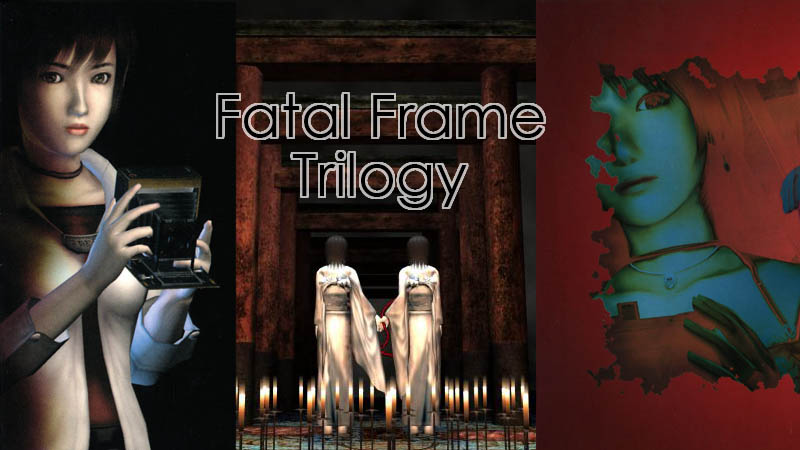
Fatal Frame / Fatal Frame II: Crimson Butterfly / Fatal Frame III: The Tormented
Developer: Tecmo
Publisher: Tecmo
Platforms: PlayStation 2, PlayStation 3 (via PSN), Xbox (as Fatal Frame: Special Edition and Fatal Frame II: Crimson Butterfly Director’s Cut)
Release Date: December 13th, 2001 (Fatal Frame), November 27th, 2002 (Fatal Frame II: Crimson Butterfly), November 8th, 2005 (Fatal Frame III: The Tormented)
Players: 1
Price: $9.99 USD each (via PlayStation 3 PSN)
The Fatal Frame trilogy on PlayStation 2 is one of the rare instances of a perfect trilogy on a single console. This generation was a time where horror games could look incredible and cater to a hardcore player, while not demanding a AAA production. Every entry only got more refined as Tecmo honed their craft with the PlayStation 2 architecture.
All three games use the standard Resi-like tank-control layout; but what made these games stand out from the much more popular Resident Evil or Silent Hill was that Fatal Frame‘s combat is functionally a first-person shooter.
The Camera Obscura exorcises spirits by taking snapshots of them. Getting really close and taking a shot at the last second before an attack does big damage, encouraging risk versus reward gameplay. The second and third game go so far as to adopt the standard twin-stick modern controls that almost every first person shooter uses to this day.
These games found a perfect middle ground that solves a lot of issues that a lot of contrarians have with Resi-like gameplay, and that has to do with combat. Miu is perfectly capable of circle-strafing around enemies- something no S.T.A.R.S. members would do till Resident Evil 6.
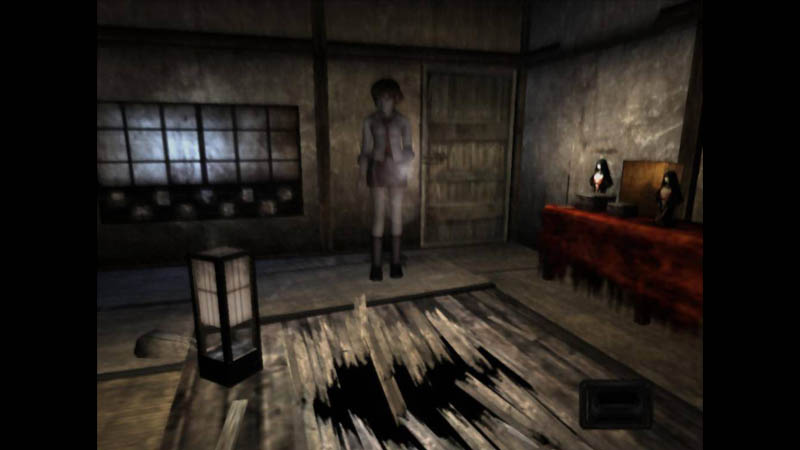
The original Fatal Frame is an impressive start to the series. Miku sets out to find her missing brother who recently explored the Himuro mansion. Angry spirits have overrun the place due to a portal to hell being opened. The harrowing adventure is heavy with atmosphere, and genuinely makes it hard to continue due to the oppressive ambiance.
Tank controls are tight between all three games, and the picturesque camera angles are always expertly framed to make the scenes more uncomfortable. Players will be forced to do things that will make their blood run cold, and there are constant sightings of fleeting glimpses of spirits.
It may be a small game, but it’s packed with replay value due to the various endings to earn. The variety of film stocks that have different statistics function as different ammo types, and also adds variety to combat. A year later, an even better sequel would release, and would compound on the best aspects of the formula.
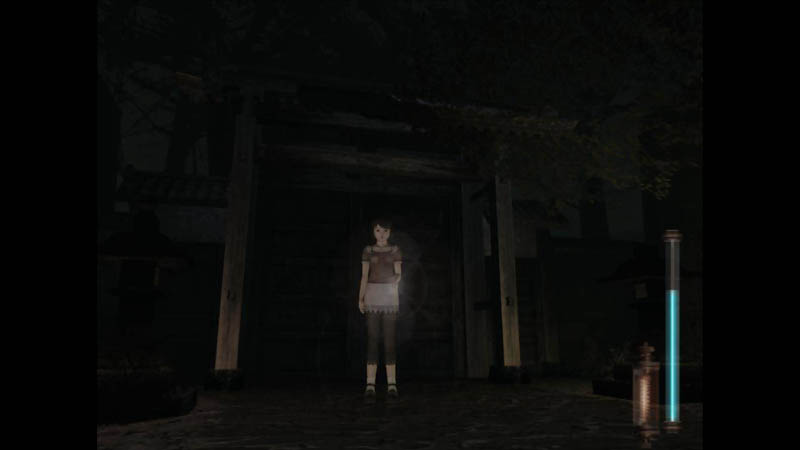
Fatal Frame II: Crimson Butterfly is a huge sequel where Tecmo spared no expense. The first game was a claustrophobic experience that was mostly set indoors, but Fatal Frame II has Mio and Mayu exploring several haunted houses set in a sprawling village to get lost in. Environments cheekily become interconnected like a massive “Metroidvania” style map.
Not only does Mio have to contend with roaming groups of vengeful spirits, but she also has to keep her sister alive and well. Puzzles also further refined in their design, and combat is much smoother than before. This is also the entry where the standard first-person shooter controls as we know them today were implemented into the photography mechanics, making this game very accessible to modern players.
Most fans of the series would agree that Crimson Butterfly would be the peak of the franchise. It would eventually get a remake on the Wii in PAL territories and Japan, but it dropped the framable frames of the fixed camera for the typical over-the-shoulder perspective that has become common with almost all non-first person games today.
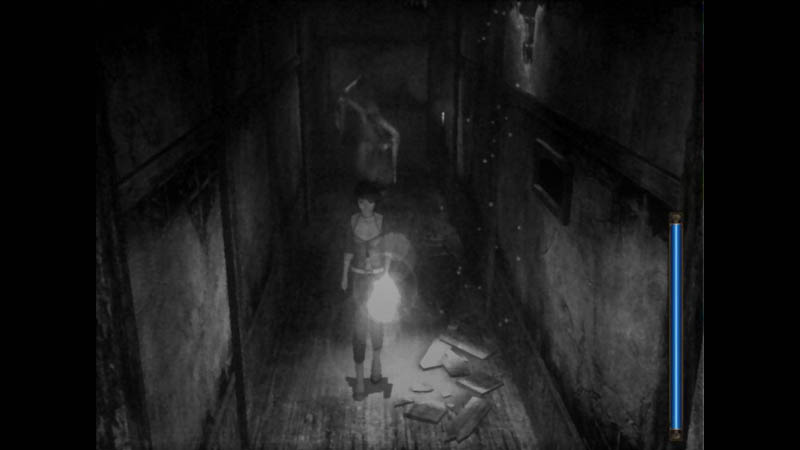
By the time Fatal Frame III: The Tormented came around, Resi-like fatigue had begun to set in. There were fewer survival games releasing overall, and Resident Evil 4 was about to come out and completely shifted the paradigm of the genre. The faithful enjoyers of Resi-likes would find that The Tormented would be one of the best looking PlayStation 2 games, looking almost a generation ahead.
The last of the PlayStation 2 Fatal Frame games boasted incredible visuals and effects that gave it an atmosphere on par with the legendary Silent Hill 2 and 3. Gameplay is largely consistent with the prior entries, and focuses on a new character who has connections to Miku from the first game, and exploring the enigmatic “Manor of Sleep.”
This trilogy would get future installments on Wii and Wii U, but would abandon the Resi-like gameplay. This initial batch of games on PlayStation 2 are some of the best examples of the Resi-like survival-horror genre that is as good, and in some cases better, than the more mainstream titles. There is no going wrong with any or all of them, and all three are very affordable on PSN for PlayStation 3.
Images: Mobygames
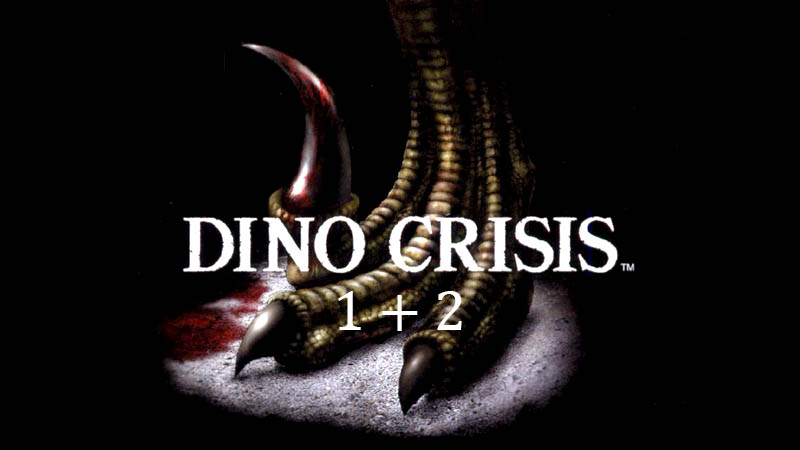
Dino Crisis / Dino Crisis 2
Developer: Capcom
Publisher: Capcom
Platforms: Windows PC, PlayStation, PlayStation 2 (via backwards compatibility), PlayStation 3 (via PSN), Dreamcast (Dino Crisis only)
Release Date: July 1st, 1999 (Dino Crisis), September 29th, 2000 (Dino Crisis 2)
Players: 1
Price: $5.99 USD each (via PlayStation 3 PSN)
Shinji Mikami perfected the Resi-like survival-horror with Resident Evil, and with Dino Crisis he would further expand on what can be done with the game design philosophy. Zombies were out, and dinosaur-mania had swept the globe thanks to the film Jurassic Park. Mikami’s next game would take advantage of this phenomena, and make raptors and a T.Rex the main predator in his next survival-horror opus.
Not all PlayStation Resi-likes had pre-rendered backgrounds; some had fully modeled 3D environments. Silent Hill was the most famous example with how it used a keen director’s eye to set up unbelievable shots as the player would move through the scene. Dino Crisis was the one of the other examples of a camera being used in this manner by a director.
While it may not be held in as high regard as the psychological-horror masterpiece; Dino Crisis would prove to be one of the most tense and harrowing Resi-likes on the PlayStation.
The primal fear of being hunted is universal. The sensation of being stalked by an enormous hungry lizard tracking the scent of your blood, while trying to run away with tank-controls and masterfully composed shots, is true tour de force.
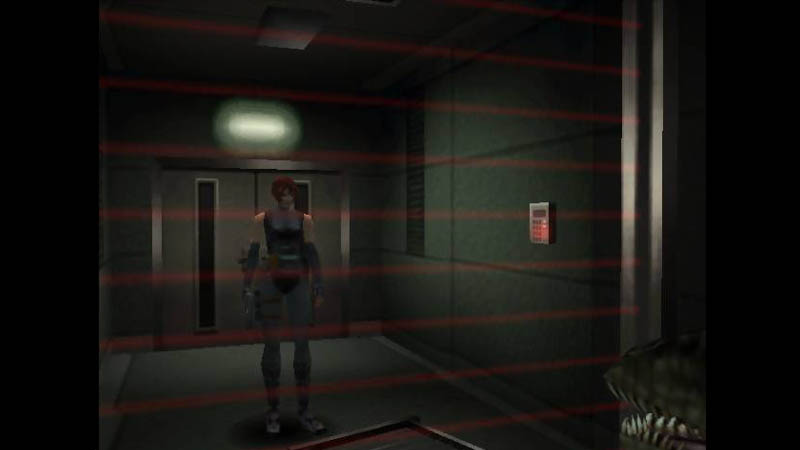
The first Dino Crisis is a lot like Mikami’s prior Resident Evil games, but with an even greater emphasis on puzzles and survival. Many of the puzzles are tied to the scenario itself.
There are many instances of players having to make hard choices of risking confrontations with raptors for a new route or an item. Dino Crisis is a fairly open ended horror game that has no hand holding, and many options for the player to experiment and explore.
Different ammo types and healing items are craftable, and there are even different healing items that have unique properties too. Dino Crisis offers a lot of tools and possibilities to the player, and it’s up to them on how to use them to confront the danger. There are a few curve balls the designers will use to scare the player, like sudden instant death QTEs that are scripted under obscure requisites, so there is no relaxing.
For some reason, Dino Crisis didn’t get as big as Resident Evil, despite it being a better game in many regards. Its design philosophy can be seen in future puzzle-heavy Resident Evil entries such as Code Veronica, and the remake on Gamecube.
For the best way to experience this Resi-like classic; the enhanced Dreamcast port is the best, but the original PlayStation version is viable, affordable, and playable on the common PlayStation 3.
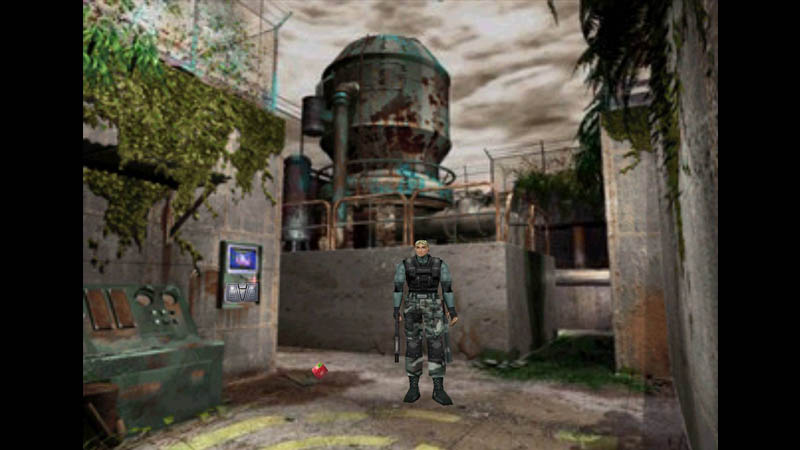
Capcom probably didn’t want to keep two concurrent survival-horror franchises going at the same time cannibalizing each other. When it came time to make a sequel to Dino Crisis, it would have a totally different approach, and prioritize hardcore action over puzzles and methodical gameplay. Despite this new direction; Dino Crisis 2 would still be a Resi-like.
Going into the sequel, it’s apparent that it’s a totally different experience. Dino Crisis 2 is almost like an arcade action game with how much running and gunning there is. One would think this wouldn’t work as a Resi-like, but it does, and as a result is one of the more refined and polished action games on the PlayStation.
The gameplay is fluid and responsive; the playable characters move at full sprint instead of walk, and auto aiming compounded with multiple targets and 180 degree turning makes the shooting feel tactical and easy to pick up. It’s too bad that the Dino Crisis franchise had died off. This could have been Capcom’s action alternative to Resident Evil, instead of Resident Evil trying to be everything to everyone.
Images: Mobygames
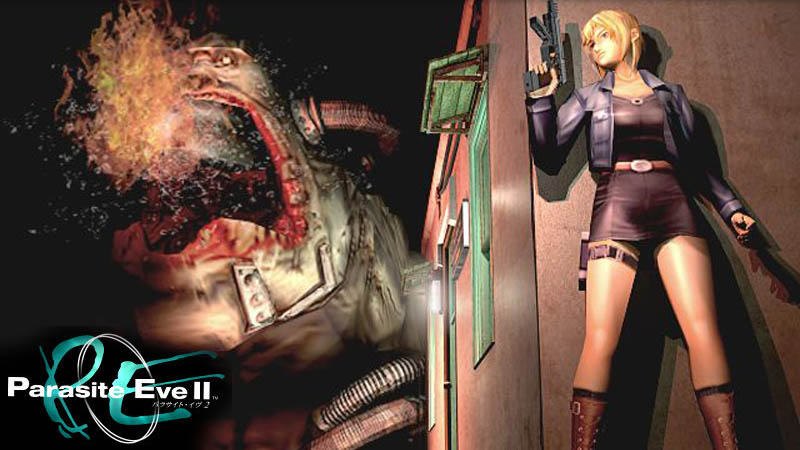
Parasite Eve II
Developer: Squaresoft
Publisher: Square EA
Platforms: PlayStation, PlayStation 2 (via backwards compatibility), PlayStation 3 (via PSN), PlayStation Portable, PlayStation Vita
Release Date: January 12, 2000
Players: 1
Price: $5.99 USD (via PlayStation 3 PSN)
The original Parasite Eve is a survival-horror action-RPG enduring classic, that is still unlike anything Squaresoft would ever make ever again. It’s a highly enjoyable game that is very accessible to modern players, and its success would spawn a sequel.
Parasite Eve II is not like its predecessor, and instead of expanding upon the mechanics established in the first game, it would push the scope of what is possible with pre-rendered Resi-likes. It’s jarring going from the first Parasite Eve to its sequel.
Resident Evil 2 was a huge hit in 1998, and is one of the highest selling PlayStation games of all time. Squaresoft saw an opportunity to make their established horror franchise take on some of the properties that made Resident Evil 2 a success. The random RPG-like encounters and tactical combat were dropped in favor for good old-fashioned tank controls, and pivot and shoot action.
To call Parasite Eve 2 a rip-off of Resident Evil 2 would be dishonest and reductive. The truth is that Parasite Eve 2 would be a much more ambitious horror game than anything else before it. Branching story paths, multiple endings, and Squaresoft’s panache for lavish production values make this Resi-like one of the most impressive and longest examples of its genre.
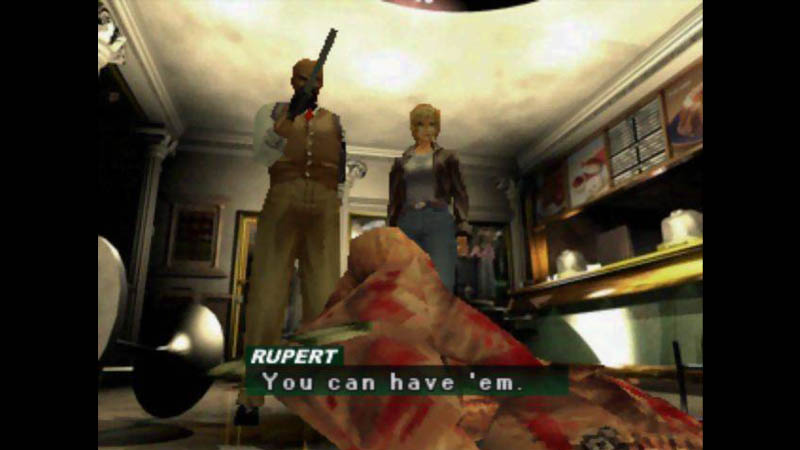
If there was one thing Parasite Eve II failed to copy from Resident Evil 2, it would be its fluid and tight controls. Getting tank-controls right is a very delicate art, and while they are not the worst, Parasite Eve II‘s inputs feel stiff and sluggish. Aya’s movement just does not feel as natural or refined as playing as any of the S.T.A.R.S. members, or even as Harry Mason.
Aya’s rigidness is made up for her vast cache of magical abilities, weaponry, and equipment; something that should be no surprise given Squaresoft’s experience with crafting expansive RPGs. Players will have options on what weapon or magical abilities they want to specialize in; making Parasite Eve II highly fertile for experimentation when playing through the other story branches.
The amount of post-game unlock able content is outrageous, and extremely compelling. Some items are call-backs to Final Fantasy games, and the extra arcade-like modes add a substantial value to the experience. Of all the Resi-likes on the original PlayStation, Parasite Eve II ranks as the most dense with its content and features.
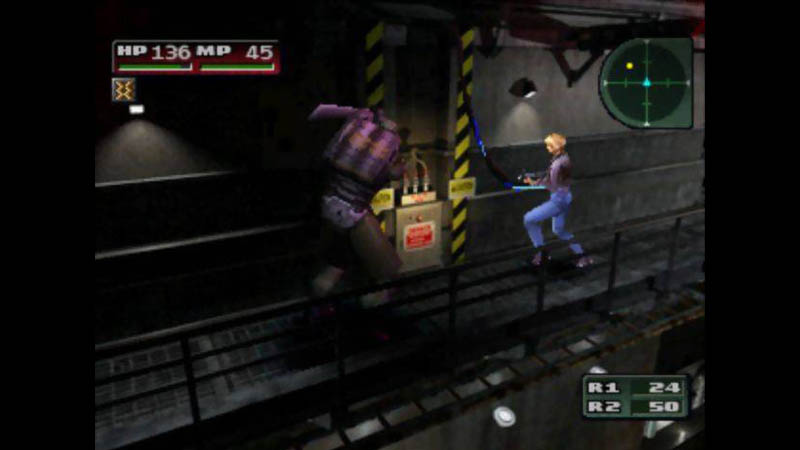
One of the major x-factors of Parasite Eve II is its visuals, and the impressive effects Squaresoft achieved with pre-rendered backgrounds. Seeing backgrounds animate was nothing new in 2000, but Squaresoft was so bold to have moments where the camera would move within the pre-render, creating an unbelievable cinematic effect.
There were some moments like this that were experimented with in Final Fantasy VIII and IX. But in Parasite Eve II, the artists and animators pull it off with so much more confidence.
It may seem quaint by today’s standards. If it were made with modern technology, it would all be rendered in 3D, and in real-time, and nobody would care. But the creativity to realize this kind of vision with extremely limited technology is why it’s so impressive.
Getting a physical copy of Parasite Eve II is absurdly cost-prohibitive these days, but thankfully it’s very cheap and easily accessible on PlayStation 3’s PSN. Like most PSONE Classics, it can also be played on Sony’s portable consoles like the PSP and PS Vita. Either option is an excellent way to experience this Resi-like classic and is highly recommended.
Images: Mobygames
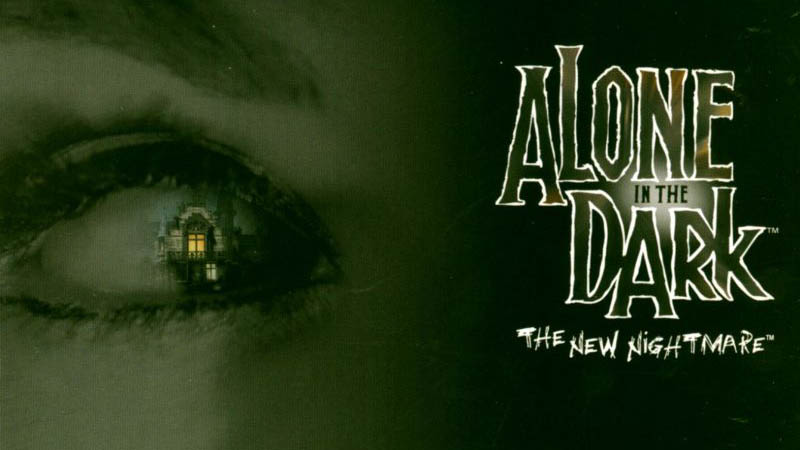
Alone in the Dark: The New Nightmare
Developer: Darkworks
Publisher: Inforgrames
Platforms: Windows PC, Dreamcast, Gameboy Color, PlayStation, PlayStation 2, PlayStation 3 (via PSN)
Release Date: May 18, 2001
Players: 1
Price: $5.99 USD (via PlayStation 3 PSN)
Alone in the Dark usually gets overshadowed by Resident Evil for being the first real Resi-like horror game. The fact of the matter is that the first few games were very much a product of their times, and were works that were born from adversity. The limitations of computers at the time wouldn’t allow gameplay to be streamlined in the way Resident Evil would perfect.
The poetic irony is that though Alone in the Dark was the original survival-horror, it would go on to eventually become more like Resident Evil in the 2001 reboot; Alone in the Dark: The New Nightmare. Movement would become smoother with fluid animations, and using weapons no longer required menu navigating; The New Nightmare had become streamlined and much more playable.
Despite being a reboot set in a more modern setting, the core of The New Nightmare is still true to what made Alone in the Dark unique. Like in the original games, players have a choice between Edward Carnby or a female character. In The New Nightmare, the female option is Aline Cedrac, and either option comes with their own bespoke gameplay quirks. Edward gets more combat, and Aline gets to solve more puzzles.
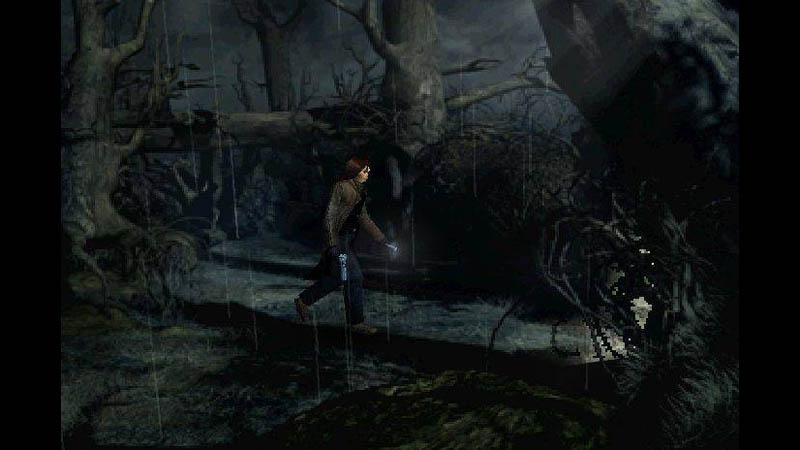
The New Nightmare was a very late generation PlayStation release; which meant the developers were able to push the visuals and get the most out of the hardware. The PlayStation 2 had already been out for almost a year, and even then the PS2 port wouldn’t happen ’til almost a year later and only in Europe.
As far as Resi-likes go, The New Nightmare is above average, and a lot of it has to do with its dense atmosphere that makes it an ideal candidate for a play-through during the fall season. Controls are solid, both characters are very fluidly animated, and are highly detailed for a PlayStation game.
What makes The New Nightmare stand out from other Resi-likes is how it uses light and darkness in its visuals and gameplay. The lighting effects are marvelous and very convincing. They go a long way in compounding on the dreary, gloomy atmosphere while exploring dusty mansions, while facing Lovecraftian creatures that emerge from the darkness.
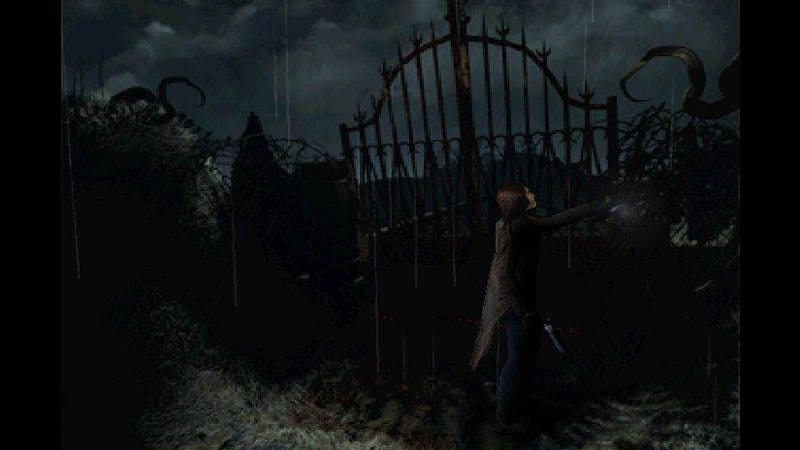
Probably the reason why Alone in the Dark: The New Nightmare didn’t find success was because it came so late in the PlayStation’s life; and that Resi-likes were becoming tired at the time. This is a well-made horror game that was a victim of timing. Today, it would be much more accepted due to the rising popularity of Lovecraft concepts in narratives, and that gamers are more accepting of Resi-like gameplay.
Another reason why The New Nightmare may have struggled is that it’s also a very challenging game. Some of the puzzles in Aline’s story veer close to being Myst-like; involving many steps and long animations. Edward’s story was no slouch either; often overwhelming players were terrible creatures that seemingly respawn forever.
Alone in the Dark: The New Nightmare is available on PSN for PlayStation 3… For now. It goes for cheap digitally, but God help the poor devil who tries to find a physical copy in decent condition at an affordable price.
Copies of the superior Dreamcast version are probably more attainable than on Sony’s platform. For the true horror maniacs, there is a very interesting and impressive technological achievement for those who have a Gameboy Color.
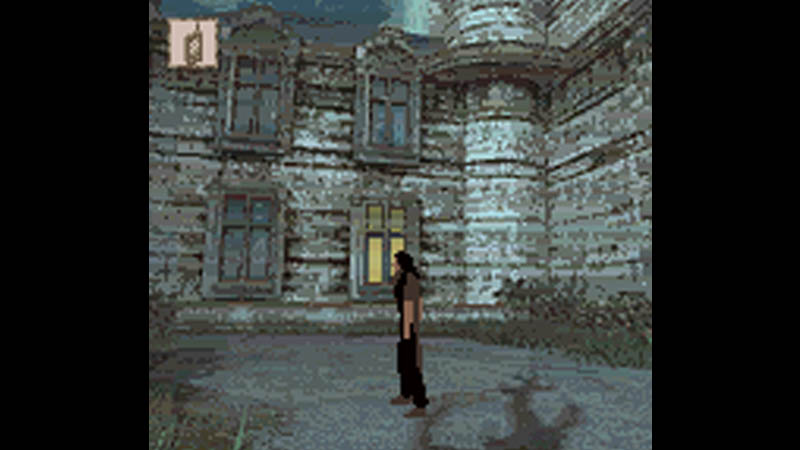
Alone in the Dark: The New Nightmare on Gameboy Color is unbelievable. The mad lads at Pocket Studios managed to demake an advanced PlayStation game into 8-bits and only 16 colors. This is not a 1:1 port however. Only Edward is playable, the scenario has been substantially truncated, and it also does not feature tank-controls; so it’s technically not a Resi-like.
Combat plays out very differently. It’s more like a random encounter system in a RPG, but with running around the field and blasting foes with a huge gun. The visuals may not look like much when blown-up, but when played on the intended display, it’s very impressive and readable. The only exception is that Edward Carnby ends up looking more like a haggard and homeless wolfman.
This version proves that a portable Resident Evil on Gameboy Color didn’t have to turn out like Resident Evil: Gaiden. Once again, Alone in the Dark still manages to beat Capcom to the punch by six months, and be the true trail-blazer. This Gameboy Color version is absolutely worth checking out for those who really feel like they just gotta be chased by a Lovecraftian dog monster once in a while on the bus, you know?
Images: Mobygames
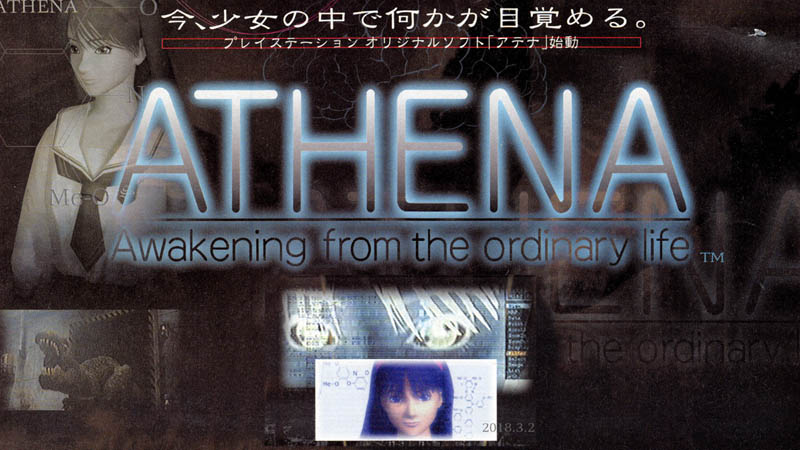
Athena ~ Awakening from the ordinary life ~
Developer: Vistec, Yumekobo Co.
Publisher: SNK
Platforms: PlayStation, PlayStation 2 (via Backwards compatibility), PlayStation Portable, PlayStation Vita, PlayStation 3 (via PSN)
Release Date: March 11, 1999
Players: 1
Price: ¥660 (via PlayStation 3 Japanese PSN) (approx. $5.99)
The PlayStation was seemingly home to a majority of some of the best Resi-likes ever made, and most of the ones developed in Japan were localized to the west. There was one very unusual Resi-like that was a very bizarre concept that has its origins as an arcade platformer, but is more widely known for its connections to SNK’s King of Fighters series.
Athena ~ Awakening from the ordinary life ~ is one of the most stupefying Resi-likes on the PlayStation, and anyone can play it with a little bit of know-how and elbow grease. While it may not have made it to the west, it did get put on the Japanese PSN and is playable on any PlayStation 3. Why would anyone want this weird horror-inspired reboot of an obscure SNK character that is entirely in Japanese?
Athena is shockingly very playable without any knowledge of Japanese. None of the dialogue or flavor text will be understandable; but through the power of visuals, players can figure out the meaning of things.
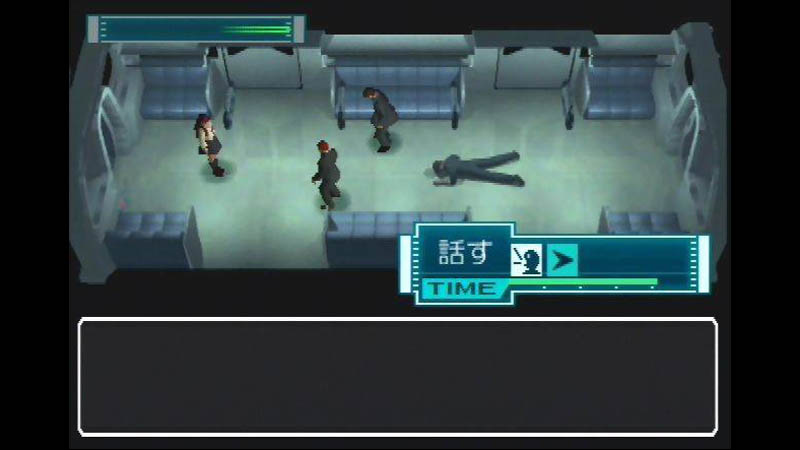
What can be easily gleaned is that Athena has emerging psychic powers, that might have ties to a powerful cooperation that has managed to clone dinosaurs, and is a leader in robotics. If this sounds wild, it’s because it is.
What sets Athena apart from other Resi-likes is its approach to visuals and its rhythm game style combat system. The picture has about 1/3 of its real estate taken up by a permanent dialogue box that displays flavor text or command choices. Why this is important is because it cuts down on how much needs to be rendered on the image. Having less to render means higher resolution, and more detailed graphics.
This cheeky approach to the realizing the visuals in Athena makes the 3D models appear almost a generation ahead of what was common at the time. Characters could almost pass for Dreamcast or arcade levels of fidelity, and the backgrounds were crisp despite still being standard definition.
This made the developers consider the framing of each camera angle during cutscenes and while exploring the pre-rendered backgrounds, as they had a much wider aspect ration due to the permanent text box. Athena ends up having a very distinct look and style from other Resi-likes on PlayStation, and it’s bolstered by its unbelievably cinematic presentation that rivals Metal Gear Solid.
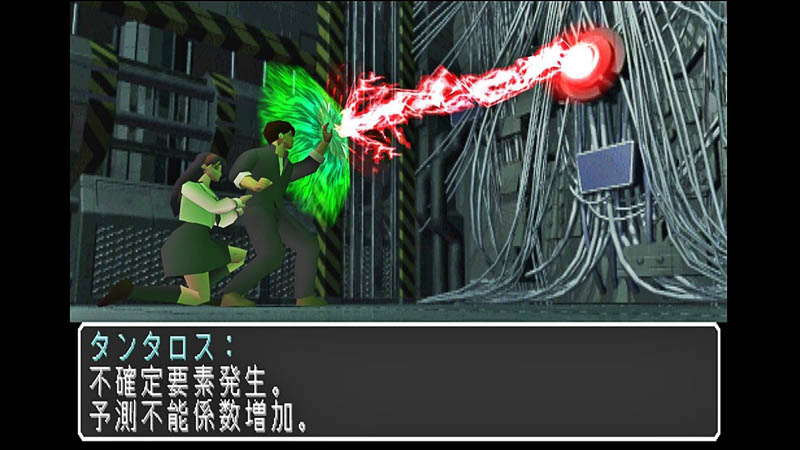
Usually when PlayStation games were multiple discs, it was because they were RPGs with big time pre-rendered cutscenes and lots of recorded audio. There were a few two-disc outliers like the Oddworld games, Resident Evil 2, Heart of Darkness, Parasite Eve, or Metal Gear Solid. Athena out did them all by being a whopping three-disc game.
The first disc alone is mostly pre-rendered computer animation that sets up the story with a lengthy English voiced sequence, followed by Japanese only text set in a modern day 2018 Japan (from a game released in 1999). There is barely an hour of actual gameplay in the first disc. Make it past that, and the experience balances itself out more evenly, and has roughly 10 hours of gameplay.
Athena ~ Awakening from the ordinary life ~ is a wonderful oddity that that sadly was never localized, and shockingly never got a fan translation. For something connected to a big name like King of Fighters and having a long legacy, it’s tragic that Athena has been neglected.
Anyone interested in experiencing this beautiful Japanese fever dream can get started by checking out our guide on how to download it on your PlayStation 3 or PSP.
Images: Mobygames
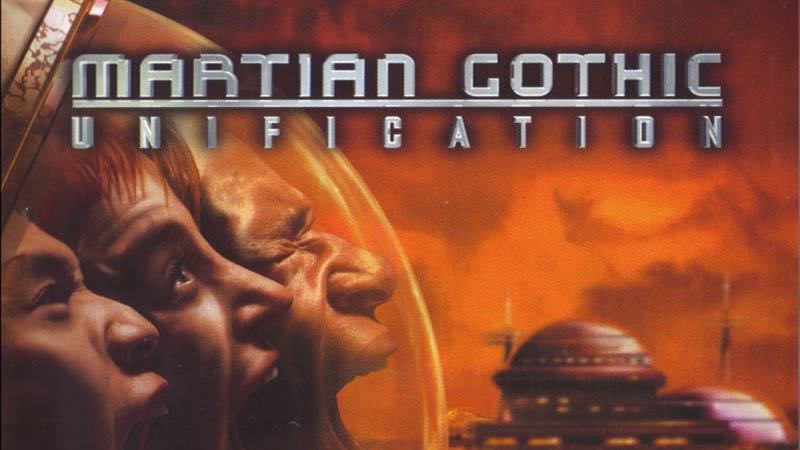
Martian Gothic: Unification
Developer: Creative Reality
Publisher: Take-Two Interactive
Platforms: Windows PC, PlayStation, PlayStation 2 (via backwards compatibility)
Release Date: November 4, 2001
Players: 1
Price: Cost Prohibitive
Two years before Resident Evil 0 introduced a real-time two-character switching mechanic, Martian Gothic: Unification pulled it off with three. Unfortunately, this is where the innovations end. This is a very derivative Resi-like that was aping off the popularity of horror games during the late 90s.
There were many sloppily made horror-games like this made around that time; The Crow: City of Angels and Vampire Countdown were infamous examples. While Martian Gothic is basically “Resident Evil in space” with its premise, it does manage to have a bit more personality, and tries to do something the other imitators do not.
Martian Gothic has complex puzzles, and trying to solve them while juggling three characters and keeping them alive is genuinely stressful. Each character has their specialty, and figuring out how to utilize their strengths is a large part of the experience; like Lost Vikings but in a Resi-like, 90s horror game skin.
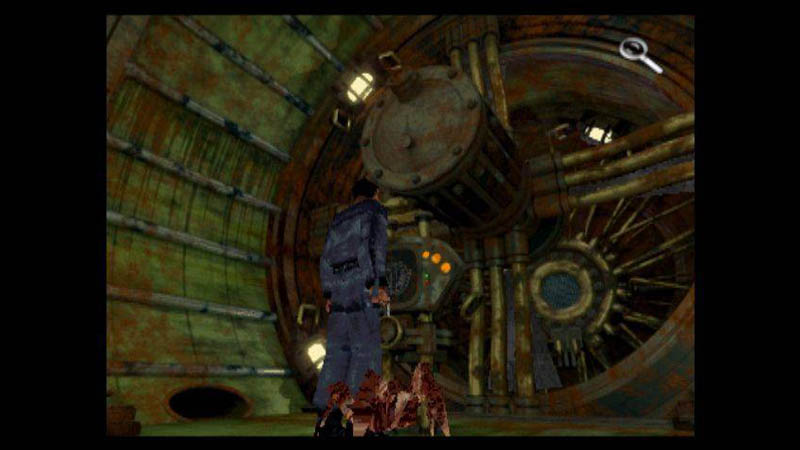
Martin Karne is the ex-soldier who has a natural propensity for violence against the Martian zombies. He is the go-to guy for most combat encounters, and can use the best weapons. Kenzo is the techie who can use advanced computer systems and VR interfaces. Running into a machine related obstacle will demand Kenzo’s know-how.
Diane is the biologist, manages a lot of the exposition, and can get involved with non mechanical aspects of some puzzles. Most importantly, Diane is the one who can make healing supplies. Since there are no herbs to mash together, she is one of the most crucial characters, as enemies can’t be permanently killed.
Martian Gothic is not just hard, it’s also really sloppy. Many Resi-likes have fluid animation and responsive tank-controls, but here they are mutilated. On top of being really stiff and sluggish with embarrassing animation; it’s frustratingly slow, and will lead to unfair deaths from one-hit kill enemies.
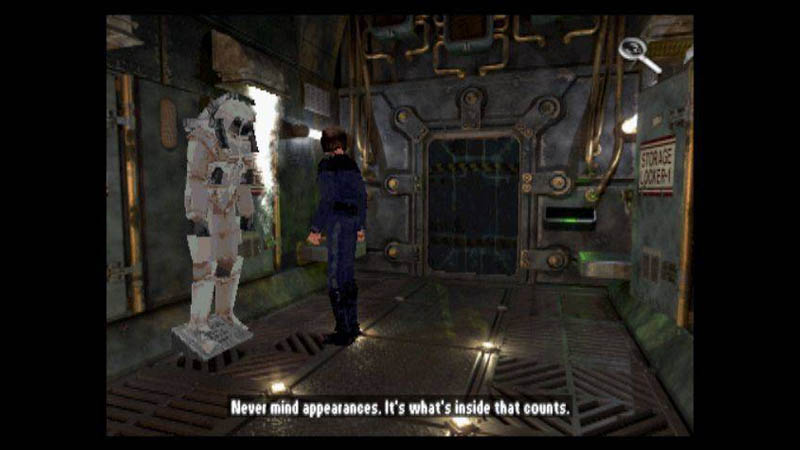
A lot of the unfair qualities of Martian Gothic could be forgiven if it had a bit more personality. Aside from Kenzo all characters are boring, and Kenzo is only fun because of how nonchalant he is about the situation he’s in. The character designs are also dull, and tend to look alike in the low-res image quality of the PlayStation.
The backgrounds do look good, as most pre-rendered backdrops tend to. The aesthetic has a very grungy and byzantine-industrial factory look to the base. Everything is filthy with rust, and looks like it weighs several tons. It barely looks sci-fi, and comes close to being fantasy.
Martian Gothic is a pretty haggard Resi-like that feels rushed and not thought out… Mostly because it was rushed and not thought out. It isn’t without its merits, and is an interesting experience to play at least once. Sadly, Martian Gothic has never been put on PSN, and physical copies go absurdly high for such a rough game that is not especially well-made or enjoyable.
Images: Mobygames
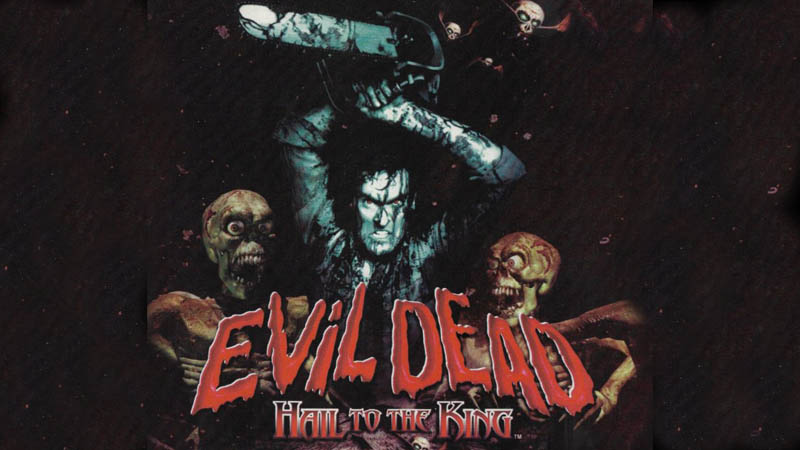
Evil Dead: Hail to the King
Developer: Heavy Iron Studios
Publisher: THQ
Platforms: Windows PC, Dreamcast, PlayStation, PlayStation 2 (via backwards compatibility)
Release Date: December 5, 2000
Players: 1
Price: cost prohibitive
There have been many games based on the Evil Dead film series dating back as far as 1984 on the Commodore 64. One would think that a concept as fertile as surviving an increasingly more powerful demonic threat while being alone in a cabin would make for video game gold. Sadly, a vast majority of the Evil Dead games are as ramshackle as the low budget production values of the original film.
The one time Evil Dead got a competent survival-horror Resi-like was at the height of the genre’s popularity. Evil Dead: Hail to the King was originally met with scathing criticism due to its absurdly high difficulty, and derivative gameplay. Replaying it today, Hail to the King is not much worse than the average horror Resi-like of the day, and the experience is elevated by the Evil Dead IP.
The crushing difficulty and aggressive, unrelenting respawning enemies ultimately make a lot more sense than the haters would suggest. Hail to the King is aiming for an accurate Evil Dead experience; to put the player in Ash’s shoes. Anyone who has seen the films would tell you that Bruce Campbell’s character has a really bad time as the events unfold.
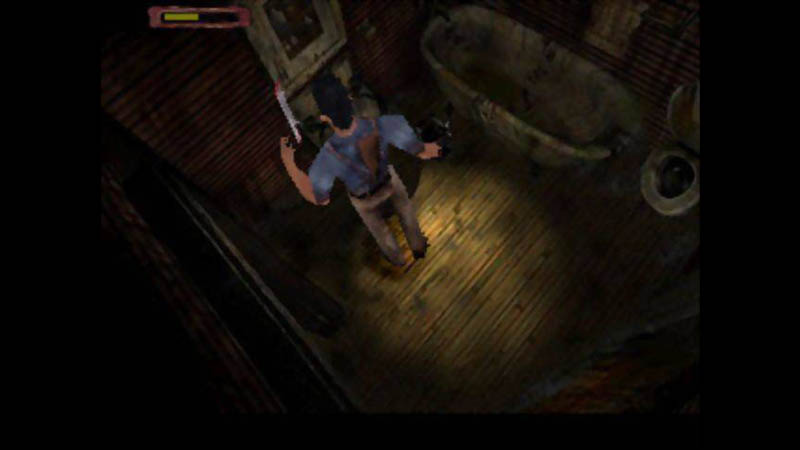
Hail to the King doesn’t get enough credit for how accurate and true it is to the Evil Dead experience. This is based on a series of sleazy and grotesque low budget movies, and the tone and ambiance is very congruent with the the first three films.
Fans will be surprised by how much representation gets squeezed into Hail to the King; the opening chapter with Ash running around the woods and campgrounds has many elements from the first and second movies, and lots of the visual cues are homaged tastefully.
The second half of the game has Ash sent back in time, where the story takes some elements from Army of Darkness. The best part of all this is Hail to the King‘s narrative is connected to the films, and is functionally the fourth Evil Dead movie the world never got. It’s not a deep plot, but it is what fans would expect for a series founded on slapstick shenanigans with demonic possessions and chainsaw hands.
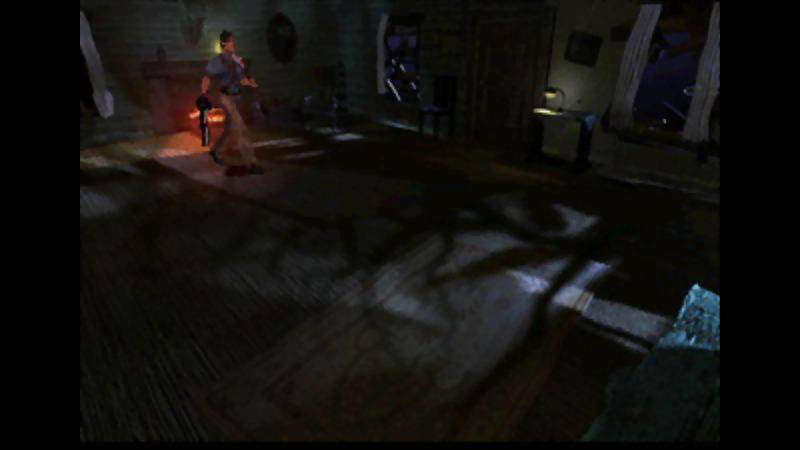
Hail to the King‘s x-factor is that it has Bruce Campbell breathing life into Ash’s character, and the Evil Dead flavor set against an open-ended 90s style survival-horror Resi-like. A lot of the time it’s best to run away from threats and to conserve resources as much as possible; making this a more hardcore horror game than average.
The visuals are faithful to the films. Ash resembles himself and is on model, down to his signature Dudley Do-Right chin. Playing the Dreamcast version is preferable, since it drastically cleans up the image; but no matter what- both the PlayStation and Dreamcast copies will be extremely hard to find and will likely be expensive. There is no version on PSN either, and interested players will be out of luck.
Why Hail to the King fetches such high price in the used game scene is a mystery. This isn’t a title that is not typically remembered fondly, and was universally panned back in the day. Only players willing to be patient and approach the game with caution and determination will be able to appreciate Hail to the King‘s finer qualities.
Images: Mobygames
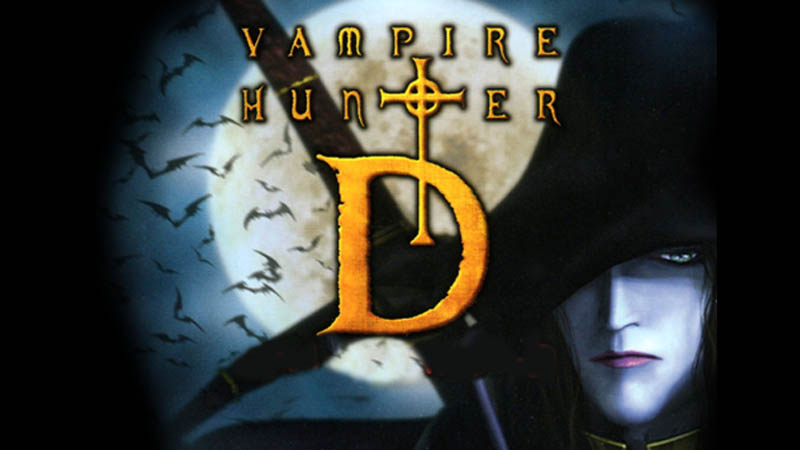
Vampire Hunter D
Developer: Victor Interactive Software
Publisher: Jaleco USA
Platforms: PlayStation, PlayStation 2 (via backwards compatibility)
Release Date: September 25, 2000
Players: 1
Price: cost prohibitive
The original Vampire Hunter D anime movie was a big inspiration to the Castlevania series. A lot of visuals were directly lifted from the film, along with a ton of classic Universal monsters movies and the Hammer films of the 70s. When it came time for D to finally get a video game, it would not be a 2D action-platformer, but a survival-horror Resi-like.
Vampire Hunter D on PlayStation is a very unusual mixture of ideas. Some of it works, but a lot of it does not, and it has to do with the game treading new ground by trying to be a Resi-like with melee swordplay. This is something that wouldn’t be perfected until Onimusha on PlayStation 2.
D‘s ambition is not completely fruitless; with a lot of practice and effort, it can become playable. The action can be very stiff, and there is no gradual difficulty climb. Vampire Hunter D begins difficult, rarely letting up; and this is what is usually the brick wall for new gamers coming into it. On top of sticky combat, the environments are massive, leading to disorientation, with puzzles as obtuse as Simon’s Quest.
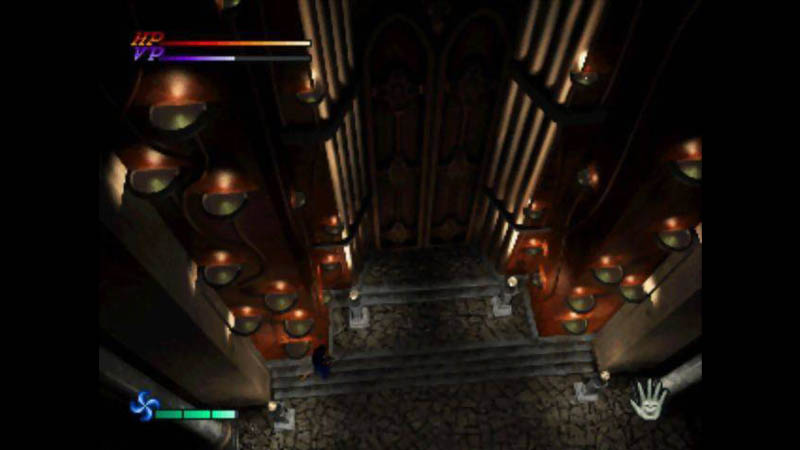
The castle’s interiors are truly otherworldly, and are unlike any environment in any horror game before it. Backgrounds resemble something more from an endgame PlayStation Final Fantasy game, which gives D a lot of personality. The amount of hidden passages, traps, and switches makes the castle feel like an enemy that is constantly trying to kill D.
Since D is a dhampir he still has to feed, which is going to be crucial as he swings his sword lethargically. Weakened enemies can be absorbed, and doing so fills up the hand meter. When full D can do all sorts of things, like resurrect from dying, or a variety of deadly attacks that come in handy during boss battles. This aspect of the combat is the one part of fighting that does work well due to how effective it is.
This game is a tie-in to Vampire Hunter D: Bloodlust; the anime movie that came out at the time, and loosely follows the same story. There are anime cutscenes used that are recycled from the film, but are extremely low quality. The narrative is very faithful to the film, and is worth a play for anyone who wondered what it would be like if Castlevania and Resident Evil were combined.
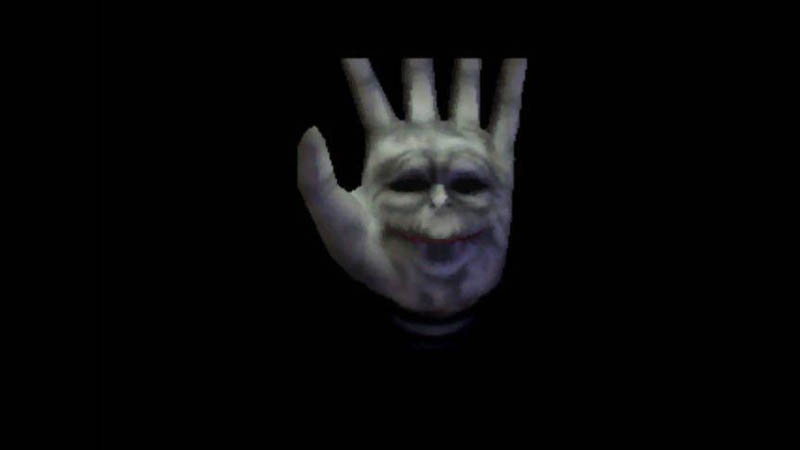
The graphics hold up nicely like most pre-rendered Resi-likes tend to. D’s model is especially impressive, and is very accurate to his appearance in Bloodlust. He looks incredibly cool, and despite the game’s obvious flaws, you want to be him because he is so awesome. Animation quality is decent, but can be overly drawn out in some critical instances.
The only other horror-themed anime Resi-like was Devilman on PlayStation, which sadly was never localized- so there aren’t too many options in this regard. D may lack polish, but it can be fun if gamers are willing to play it on its terms and take their time. It’s also one of the lengthier Resi-likes of its kind; with play times reaching the 10 hour mark.
Regretfully, Vampire Hunter D is only playable with a physical copy. Most retro tie-in games rarely see digital releases due to expiring licenses, and this title fell victim to legal limbo. Since gamers have rediscovered Vampire Hunter D and realized it actually isn’t as bad as the media made it seem, its become rare and expensive.
Images: Mobygames
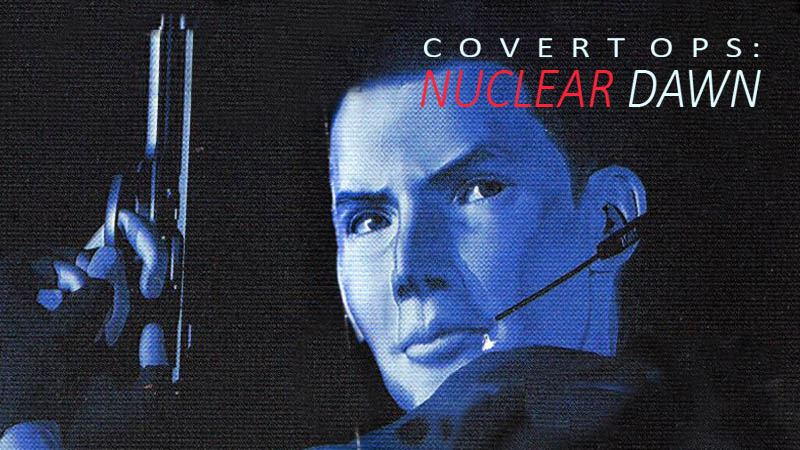
Covert Ops: Nuclear Dawn
Developer: Sugar and Rockets
Publisher: Activision
Platforms: PlayStation, PlayStation 2 (via backwards compatibility)
Release Date: May 31, 2000
Players: 1
Price: cost prohibitive
Resi-Likes on PlayStation tended to be horror themed, and the only big name exceptions were the two Fear Effect games from Eidos. Along come Sugar and Rockets to release the only game they would make to reach the west, and it be unlike any Resi-like by virtue of copying actionsploitation of the 90s.
Covert Ops: Nuclear Dawn is what happens when Under Siege 2: Dark Territory meets Resident Evil‘s gameplay. One would think that the developers would ape off Metal Gear Solid‘s style for tactical stealth action, but here we are with tank-controls and fixed camera angles. Although Nuclear Dawn does steal Kojima’s style in UI design and font choices.
A train that is transporting a nuclear bomb has been hijacked by terrorists. Jack Morton is a NATO trooper who looks a lot like Nicholas Cage, and it’s up to him to neutralize the threats. He will have to explore 19 compartments, as well as engage in surprisingly polished stealth and action mechanics to outwit and outgun the terrorists.
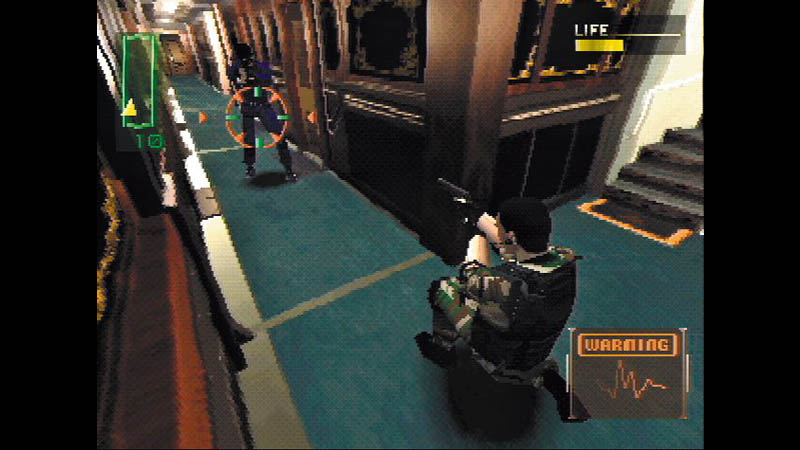
Nuclear Dawn is not just all actionsploitation; this happens to be a thinking man’s Die Hard wannabe, and has its share of puzzles to even out the action pacing. Despite it taking place on a speeding train, the various compartments are well-designed and extremely varied.
There are moments when Jack will have to venture out on top of the train and will contend with icy slick surfaces, while also avoiding gunfire from helicopters. There are so many delicious and nutritious 90s action movie pastiches that it’s hard to not be utterly endeared by the bombastic spectacle.
It’s a shame Nuclear Dawn was completely ignored. The Resi-like gameplay is extremely polished, and is one of the more refined and varied examples of its kind. Even though it’s a blatant copy of fan favorite action films, it does it all completely straight and without irony. This can make it feel generic because it doesn’t really have a style of its own, and comes off as pandering to the west.
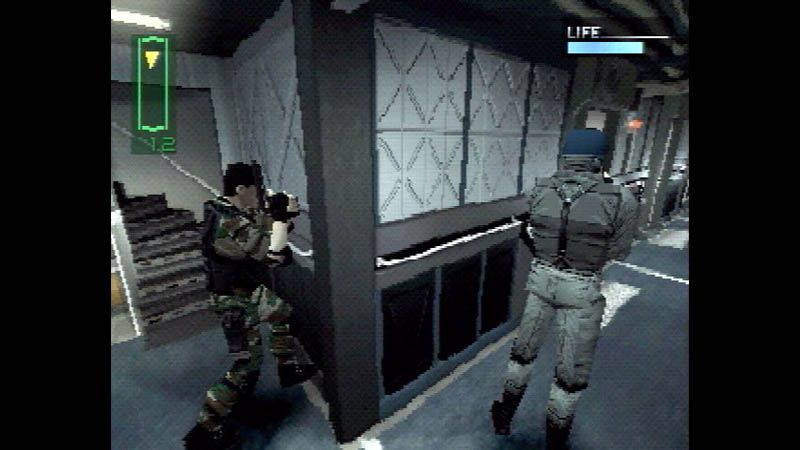
Having such a run-of-the-mill premise probably didn’t help it stand out at the time. Even worse yet- the PlayStation 2 was already out by the time Nuclear Dawn had its boring box with nondescript title on display on store shelves. What this needed was better marketing and a more imaginative title like “Showdown on the Nuclear Express” or “Psycho Train to Hell”.
The cool gray metallic surfaces and Hollywood-style lighting put Nuclear Dawn in a similar visual style as Metal Gear Solid. The cinematic flair due to the fixed angles gives the scenario a stylish presentation. The developer had never done anything like this before, and the fact that the game is so confidently designed and has smooth tank-controls is impressive.
Too bad that Covert Ops: Nuclear Dawn never got a PSN release. Like all late generation PlayStation games that pushed the hardware, it became rare and expensive. Since the growing nostalgia for Resi-likes has spread, Nuclear Dawn has gained a small but dedicated following for its excellent gameplay and action movie heroics.
Images: Mobygames
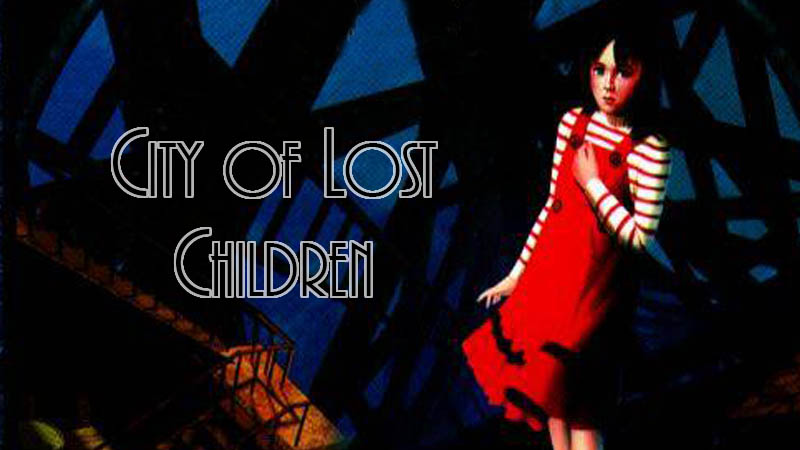
The City of Lost Children
Developer: Psygnosis
Publisher: Psygnosis
Platforms: DOS, PlayStation, PlayStation 2 (via backwards compatibility)
Release Date: March 31, 1997
Players: 1
Price: cost prohibitive
The City of Lost Children was a 1995 French avant garde surrealist fantasy film by director Jean-Pierre Jeunet. It was about a bunch of scientists who kidnap children for their dreams. The game follows this premise, but has the perspective focus solely on Miette, instead of focusing on the antagonist and his inability to dream.
Why this game was made and released almost two years after the movie is a mystery. The film had a following in the 90s, but it was not exactly a huge blockbuster, and the target audience were not exactly the kinds of people who would own a PlayStation. It was an arty dystopian European film with subtitles- there was no reason for Psygnosis to develop this. Yet here it is.
It’s nothing short of a miracle for such an obscure game to exist. Most people are not aware The City of Lost Children had a video game- even more surprising is that it happens to be a solid Resi-like. Unlike other entries mentioned prior, The City of Lost Children does not have combat. Miette is a little girl and most of her enemies are adults, so it wouldn’t be believable for her to take them out in any direct capacity.
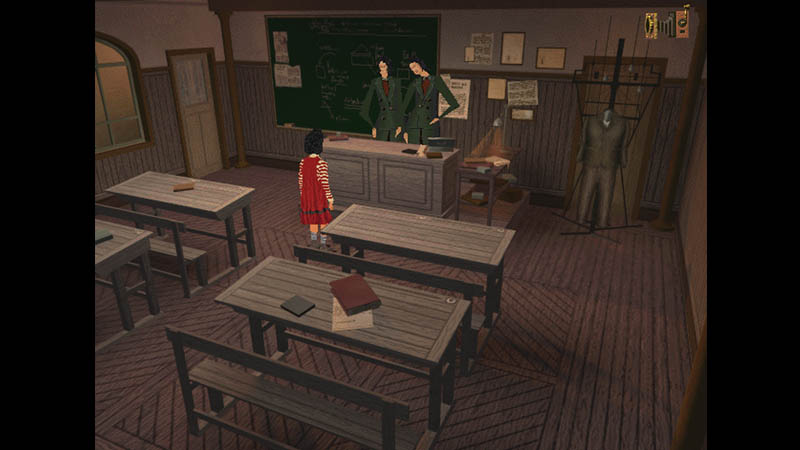
This Resi-like has a lot more in common with point-and-click adventure games than it does with traditional survival horror. Miette will be exploring the industrial, nightmarish city; looking for clues, solving puzzles, and generally avoiding adults. There will be usually more than one problem to negotiate at a time; allowing the player to approach the game at their own pace.
Navigation feels natural thanks to the fluent tank-controls, and distinctive level design. The city itself is interesting to explore thanks to the beautifully composed shots for the fixed perspectives. The angles are memorable enough that is becomes easy to make a mental map of the environment, and to explore with confidence.
The movie’s aesthetic and production design has been faithfully recreated. Jeunet and his crew created a very interesting world, and being able to get further immersed in ways the film could not is a good enough reason for gamers who love the film to seek this out. Fans of the film will probably be shocked hearing so many English accents for characters who used to speak only French.
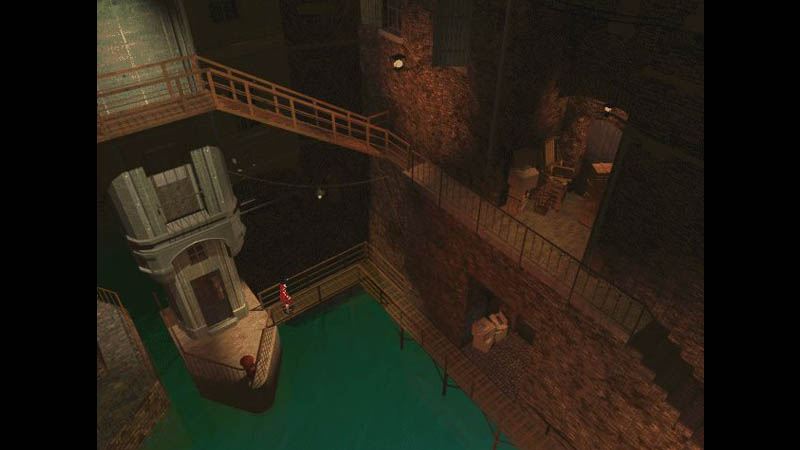
Most of the gameplay involves searching for things and putting the thing into a thing. It’s a very 90s adventure game experience, and it’s an acquired taste for those who don’t mind hitting a wall once in a while. It’s too bad that there were no clips of the film used to better convey some of the story. Using narration with some scenes could have done wonders for exposition.
The City of Lost Children is a very short game for anyone who knows what they are doing, and is only a pretty short game for everyone else who plays it casually. Even when getting stuck on an obtuse puzzle, the play time will barely be padded out. It’s obvious that the poor devs didn’t have much time or money to flesh this game out as well as it needed, since it’s also very linear and focused.
As expected from an art house French fantasy movie tie-in, The City of Lost Children is absurdly rare and expensive. Most gamers will be out of luck trying to find a copy on PC or PlayStation, and would be better off watching the movie while playing a few sessions of a favorite Resi-like of their choosing.
Images: Mobygames
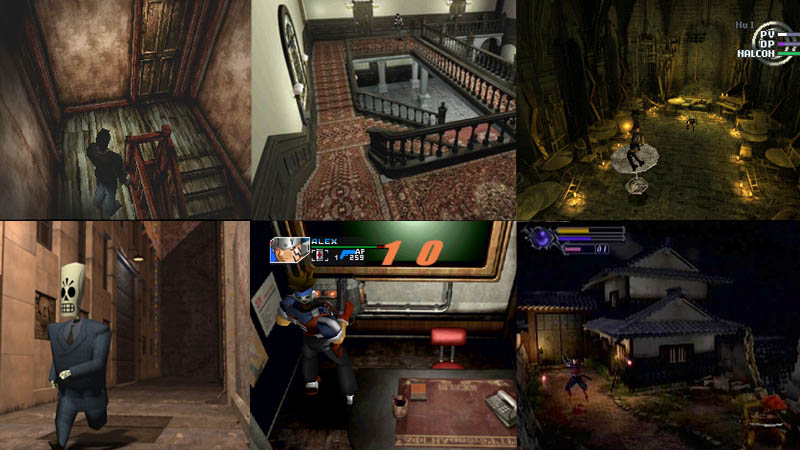
Resi-likes are a bizarre yet cinematically compelling sub-genre of games that used style to express their substance. While there were plenty that were on the rough side, more often than not there were more quality titles than poor ones. Developers were just beginning to realize just how flexible Resi-like gameplay can be during the late 90s and early 2000s, but then the entire gameplay philosophy just vanished.
Onimusha was able to prove that Resi-like gameplay could have excellent melee action, and was the progenitor for what Devil May Cry would become. Grim Fandango confusingly used Resi-like gameplay to push the cinematic story-telling of the Lucasarts style adventure game.
There was even an anime style action Resi-like with T.R.A.G.; and a psychic druggie action-horror game with Galerians. The genre truly had no limits.
There are plenty other worthwhile Resi-likes out in the wild. Some are famous and some are completely unknown. A few Resi-likes happen to launch some of the biggest franchises in gaming history. Are there any Resi-likes you, the gamers at home would be interested in playing? Which are your favorites? Tell and explain in the comments below!